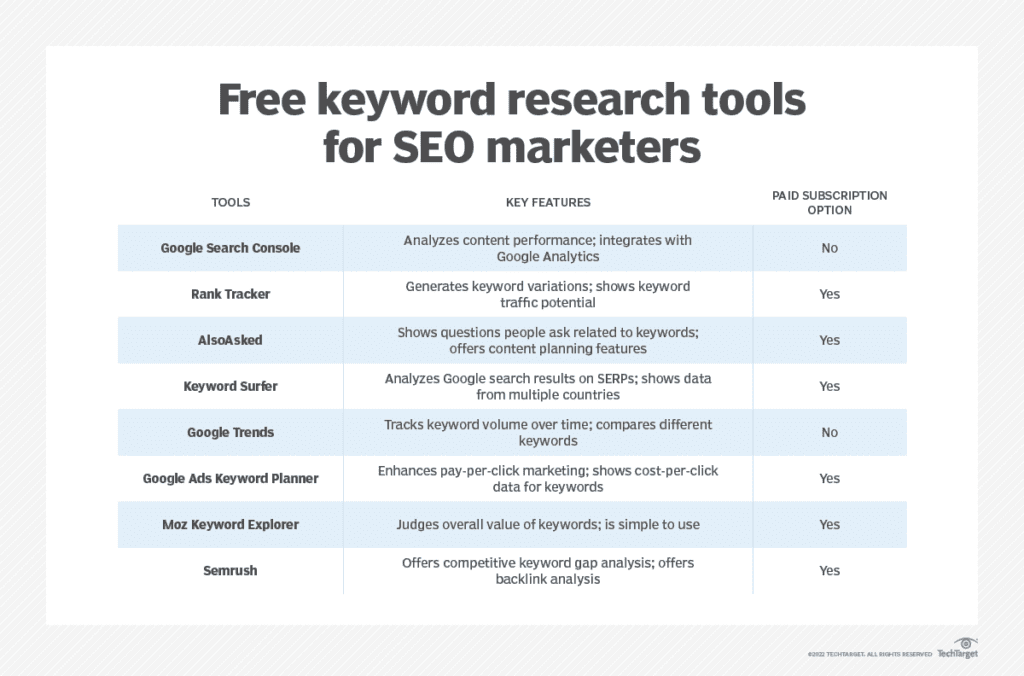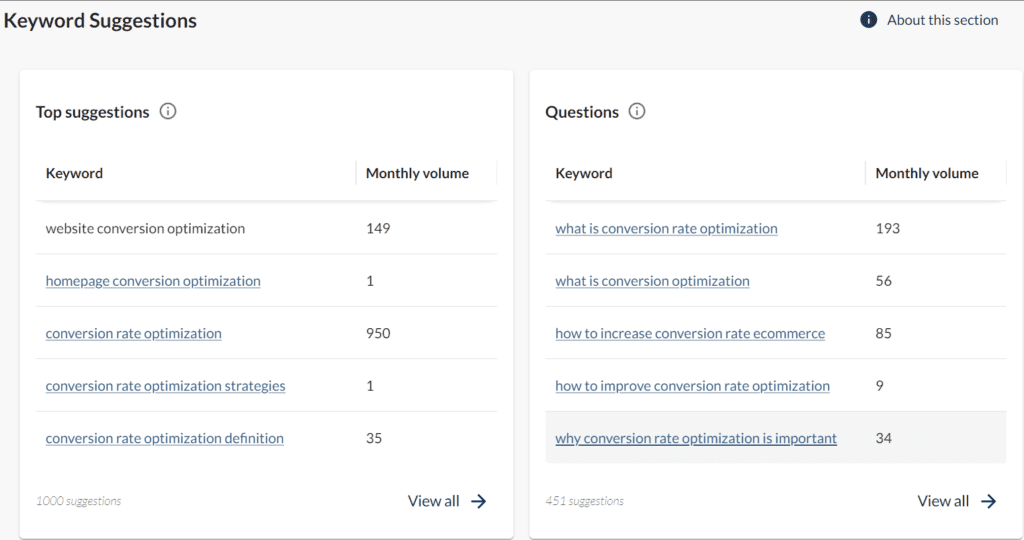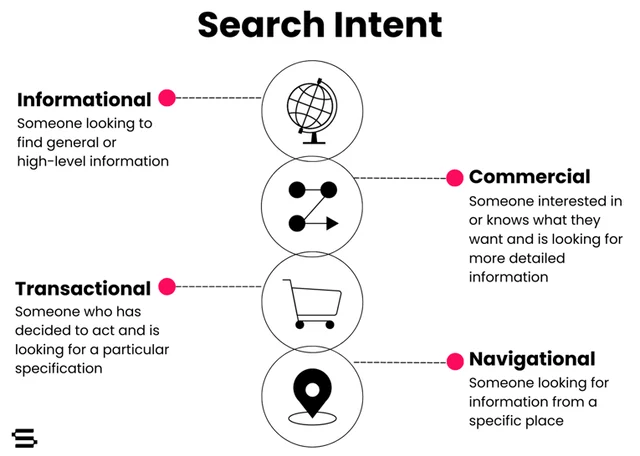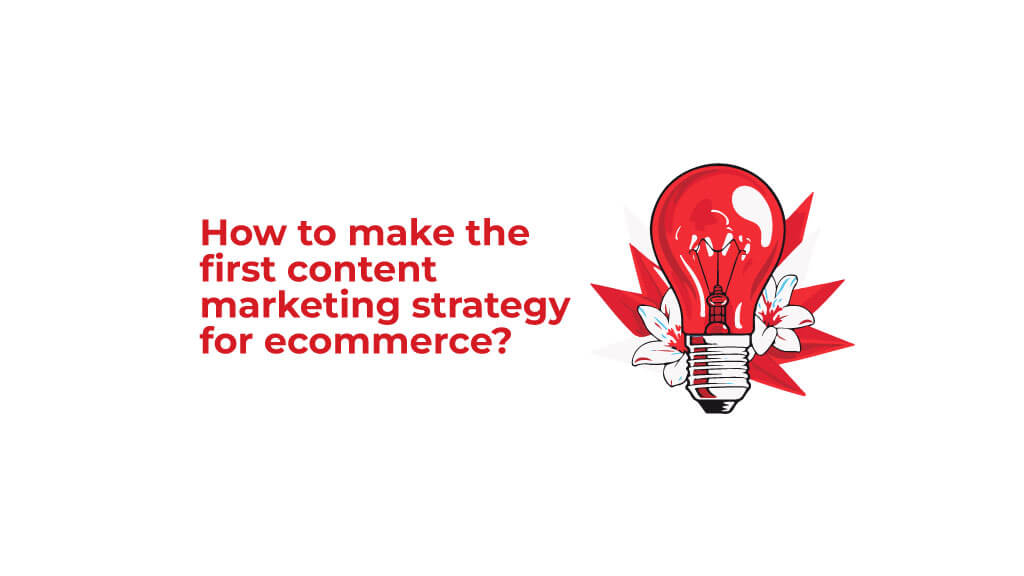According to Keyword Everywhere, over 94% of keywords get ten or fewer monthly searches. That showcases the importance of strategically inserting relevant keywords in your content to help Google crawlers and searchers find your content. This is what keyword mapping is.
Technically, keyword mapping means applying specific keywords to relevant pages on a website. Such an activity is the backbone of a good SEO strategy. Targeting different keywords on each page eliminates keyword duplication and thus increases the chances of page visibility in search engines.

Keyword mapping is crucial to attracting organic traffic to your e-commerce store. It can also improve website structures and guide content creation according to user needs.
With keyword mapping, you can understand the user’s search intent for keyword research. This indicates whether the user is searching for information, ready to purchase, or just seeking a particular service. The content should match what your ideal user is looking for.
Whether you’re a seasoned SEO professional or just starting your journey, keyword mapping is a fundamental step toward achieving your website’s conversion goals, and Ancorrd is here to help.
Keyword research and its importance in keyword mapping
The top five organic results account for 69.1% of all organic searches. That’s why focusing on SEO strategies such as keyword mapping is essential.
Keywords refer to searching for or finding the search terms typed by users on the search engine. They provide insight into popular search queries and user intent.
Keywords in keyword mapping are tagged or assigned to corresponding pages or relevant pages so that each page targets the right users and search intent. This helps in optimizing website content to rank higher in search results.

Types of keywords
- Head Terms:
They are short competitive keywords like “SEO services” or “digital marketing.”
They have a high search volume but are difficult to rank for because of high competition.
- Long-Tail Keywords:
These are more specific phrases, with less competition, like “How to create an ideal customer persona?” or “How to improve website conversion rate.” They are usually easier to target and better match user intent.
- Informational Keywords:
According to Moz, roughly 8% of searches are questions, like “What is SEO?” where users seek more knowledge or answers for a problem they face. This mainly includes providing information rather than direct conversion.
- Transactional Keywords:
Transactional Keywords Include keywords indicating intent to buy, such as “buy SEO software” or “hire SEO services.” They are used when your goal is to drive conversions or business transactions.
Popular keyword research tools
There are a few tools you may use for keyword research. Google Keyword Planner is free and helps users identify the keywords and their volume. The tools offered by Ahrefs and SEMrush are paid; they both offer more advanced features, such as keyword difficulty analytics, competition metrics, and the discovery of related keywords. These tools comprehensively show which keywords can drive organic traffic to your website.

How to conduct keyword research using tools
1. Determining seed keywords:
Ideally, some head keywords would be “SEO for mid-market businesses” or “website conversion optimization.”

2. Researching of related keywords with search volume analysis:
Use the Google Keyword Planner, Moz, or Ahrefs to find keyword variations.

3. Keyword difficulty and competition:
Determine how hard it will be to rank for each keyword. Tools like SEMrush and Moz will give you a keyword difficulty score.

4. Long-tail keywords:
You can use long-tail keywords to target a more specific audience if you have a new website with no established domain authority. It’s easy to rank for such keywords, plus the competition will be much less. For instance, Long-tail keywords like “how to increase website conversions for small businesses” or “how to increase conversion rate in retail” are more specific.

To read more about keyword research and how to use keywords for SEO and rankings, read the
Blog, How to Conduct Keyword Research for Local SEO: Best Tools and Techniques
What is search intent? How may it help you?
Search intent is a user’s perception or thought while typing a particular query in the search bar. It usually means what the user intends to find after entering a specific term.
Understanding the types of search intent is essential in keyword selection as it determines and helps align your content strategy with the user’s search intent, which helps with better conversions.
Types of search intents:
- Informational: Users need information or solutions. For example, when someone asks, “SEO tips for beginners,” that reflects the intent to learn.
- Commercial: The user is already aware of what they want; they are just seeking more detailed information. For instance, a person’s intent is purely commercial when a person asks for “Blue dress reviews.”
- Transactional: These are people who have a purchase intent and are willing to take action. For Ancorrd, one of the transactional keywords could be “best SEO service provider in California”
- Navigational: Users are looking to access a particular website or page. A search query such as Ancorrd service pricing suggests an intent to directly navigate to a page relevant to Ancorrd’s offerings.

How to build a keyword map for an e-commerce business?
A keyword map is a visual or structured presentation linking specific keywords to website pages. It is part of critical SEO strategies because it ensures that each page has a keyword or set of keywords targeted toward it.

Following are the steps used in keyword mapping:
- Organize your researched keywords in a spreadsheet, mentioning relevant columns such as keyword, search volume, difficulty, and intent.
- Group keywords on a theme: It entails categorizing keywords from the greatest degree of the user’s intent.
- Tag pages with keywords: Associate each topic with the most appropriate page on your website.
- Incorporate supporting keywords: Find some related long-tail keywords that you can include on your pages for better topical coverage and organic reach.
- Then, set goals and priorities: Define goals for each topic cluster (e.g., better ranking, growing organic traffic, creating leads).
Use SEMrush’s keyword mapping template. This will make your keyword mapping journey easy. You can easily navigate the keywords for your e-commerce business through this keyword mapping template.
Pro tips from Ancorrd for effective keyword mapping:
- Update the keyword map regularly: the keyword map keeps changing with the search trend.
- Stay informed about SEO best practices: Stay updated with Google’s algorithm and new ranking information, and align your keyword strategy accordingly.
- The user experience should be considered. A website’s structure and content should be optimized according to the intent of the targeted keyword that the user might have in mind.
- Use SEO tools to track your keywords continually: Use tools to track the performance of your keywords, identify competitor keywords, and optimize your strategy.
Conclusion
Keyword mapping is one of the crucial components of an effective SEO campaign. It ensures that every page on your website targets specific, relevant keywords and aligns content with the search intent. With keyword mapping, you can better structure your website, increase organic traffic, and guide your content-making efforts.
Subscribe to our weekly newsletter for crispy SEO tips and marketing strategies that win millions of qualified leads with minimal marketing spend.
FAQs
-
How do you do keyword mapping?
Following are the steps used in keyword mapping:
1- Keyword organization: Organize your researched keywords in a spreadsheet, mentioning relevant columns such as keyword, search volume, difficulty, and intent.
2– Group keywords on a theme: This entails categorizing keywords based on the most significant degree of the user’s intent.
3- Tag pages with keywords: Associate each topic with the most appropriate page on your website.
4- Incorporate supporting keywords: Find related long-tail keywords to include in your pages for better topical coverage and organic reach.
5- Set goals and priorities: Define goals for each topic cluster (e.g., better ranking, growing organic traffic, creating leads). -
What is keyword mapping?
Keyword mapping is applying specific keywords to relevant pages on a website. This activity is the backbone of a good SEO strategy. Each page targets different keywords, eliminating duplication and increasing search results.
-
How do you map keywords to pages?
Here are five basic steps to keyword mapping:
1- Start with one query to find related keywords.
2- Combine keywords that answer the same question.
3- Create topic groups based on keywords.
4- Outline pages and URLs to address topic groups.
5- Continue mapping keywords over time.







